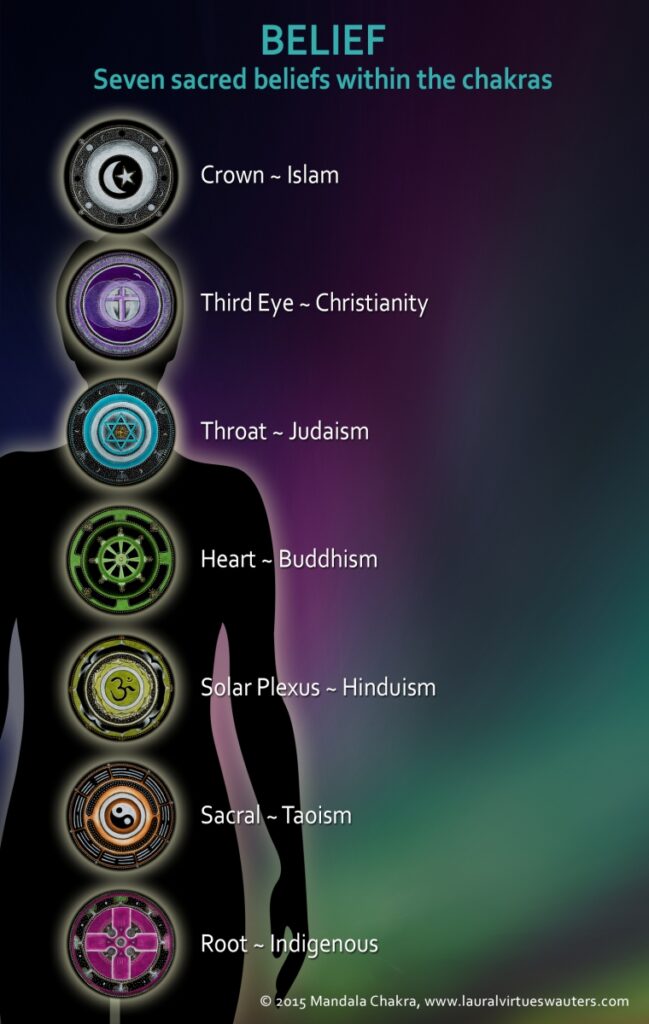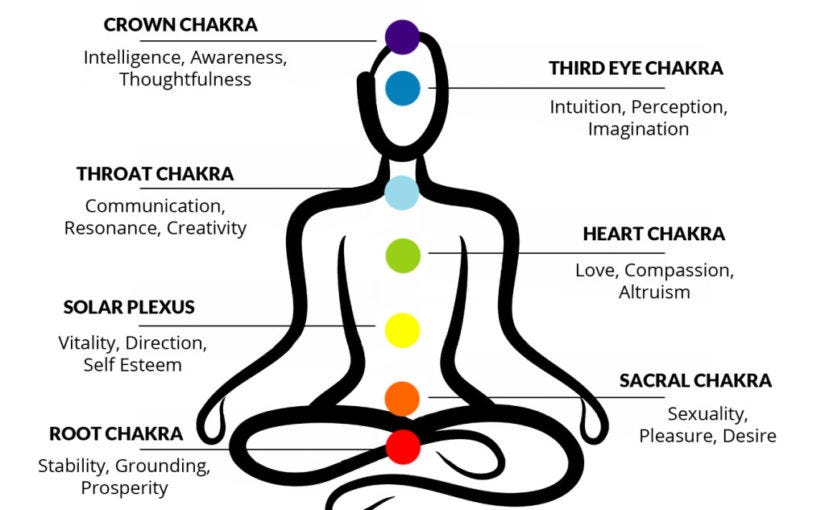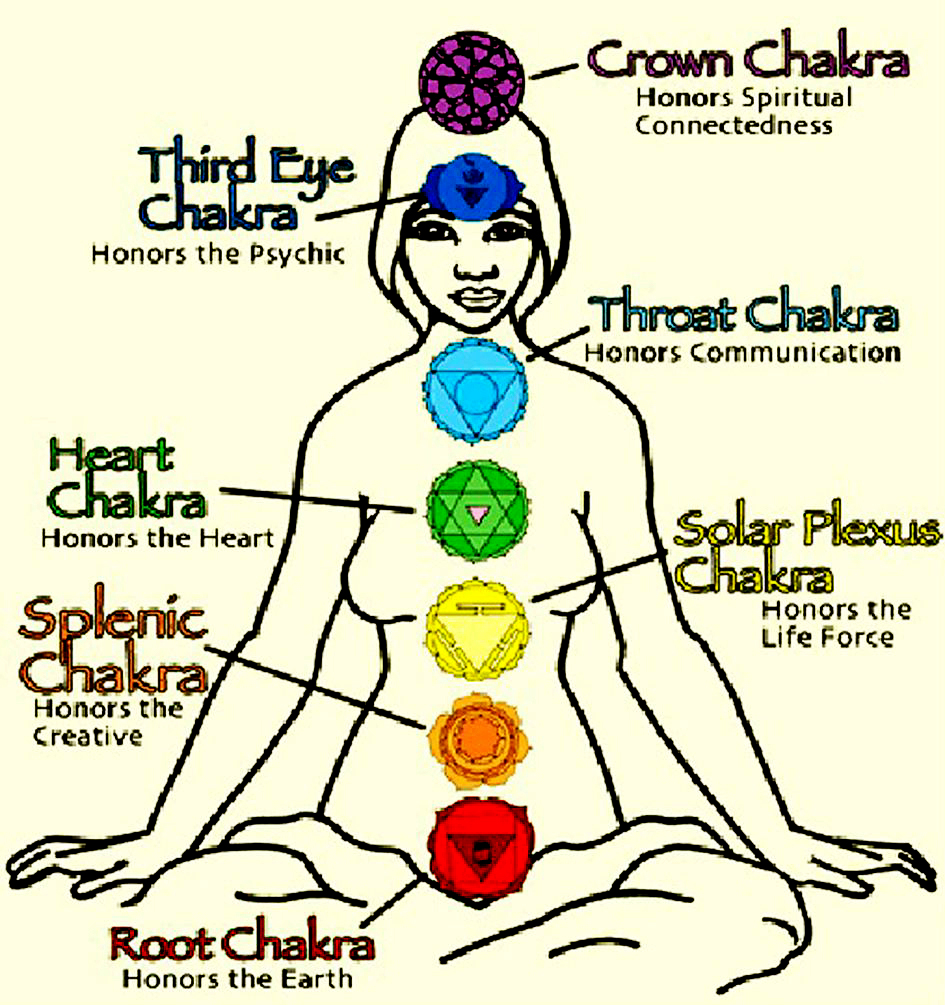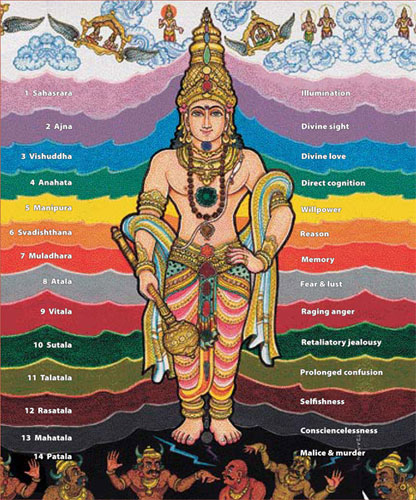In this article, you will discover which religious beliefs encompass the notion of chakras. Exploring the connection between spirituality and chakras, we will uncover the religious traditions that incorporate these energy centers into their practices. From ancient Hinduism to modern New Age movements, join us on a journey to unravel the religious beliefs that embrace Chakras. Chakras, the energy centers within the body, hold a significant place in various religions and spiritual practices. Each religion or spiritual path offers its unique perspective on the chakra system, exploring its symbolism, significance, and practices for harnessing and balancing the energy. In this comprehensive article, we will delve into the beliefs and practices surrounding chakras in different religions and spiritual traditions.
Hinduism
Overview of Chakras in Hinduism
In Hinduism, the chakra system is deeply rooted in the belief of energy centers within the subtle body. The concept of chakras can be traced back to ancient Vedic texts, where they are described as spinning wheels of energy aligned along the spine. These chakras are believed to influence various aspects of a person’s physical, emotional, and spiritual well-being.
The Seven Chakras in Hinduism
In Hinduism, the seven chakras hold great significance. Starting from the base of the spine, the seven chakras are known as Muladhara, Swadhisthana, Manipura, Anahata, Vishuddha, Ajna, and Sahasrara. Each chakra is associated with a specific color, element, mantra, deity, and qualities. Understanding and balancing these chakras is believed to lead to spiritual growth and self-realization.
Chakra Symbols and Their Meanings
Chakra symbols play an essential role in Hinduism, representing each energy center in a visual form. These symbols often include geometric shapes, such as circles, triangles, and lotus petals, each carrying a unique meaning and significance. The symbolism behind these chakra symbols provides insight into the qualities and attributes associated with each chakra.
Chakras in Hindu Scriptures
Hindu scriptures, such as the Upanishads and the Yoga Sutras of Patanjali, extensively discuss the chakra system. These texts provide detailed instructions on how to awaken, purify, and balance the chakras through various practices, including yogic techniques, meditation, breathwork, and mantras. The scriptures also emphasize the importance of integrating chakra work into one’s spiritual journey for self-discovery and enlightenment.
Practices and Rituals in Hinduism that involve Chakras
Hinduism offers numerous practices and rituals that involve working with the chakras. Yoga, specifically Kundalini Yoga, focuses on awakening the dormant spiritual energy known as Kundalini and guiding it through the chakras. Other practices, such as pranayama (breath control) and mudras (hand gestures), are also used to balance and activate the chakras. Additionally, certain rituals and ceremonies aim to purify and harmonize the chakras, enhancing spiritual growth and well-being.
Buddhism
Chakra Concepts in Buddhism
While Buddhism may not explicitly emphasize the chakra system as Hinduism does, it acknowledges the existence of energy centers within the body. These energy centers, known as chakras, are believed to influence one’s physical and mental well-being. In Buddhism, the focus is on understanding the nature of mind and developing mindfulness, which indirectly affects the flow of energy through the chakras.
Chakras in Tibetan Buddhism
Tibetan Buddhism incorporates chakra concepts into its spiritual practices. The Tibetan tradition recognizes five major chakras, situated along the central channel or “Sushumna.” These chakras are associated with specific qualities and elements, and practitioners employ various meditation techniques, such as deity visualizations and mantra recitation, to balance and purify the chakras.
Practices to Balance Chakras in Buddhism
Buddhism offers a range of practices that indirectly influence the chakra system. Meditation, a fundamental aspect of Buddhist practice, cultivates mindfulness and awareness, which can positively impact the energy flow through the chakras. Additionally, Buddhist teachings on compassion, loving-kindness, and wisdom contribute to the overall well-being of an individual, indirectly influencing the balance of the chakras.

Jainism
Chakra System in Jain Philosophy
Like Hinduism and Buddhism, Jainism also recognizes the existence of chakras within the body. In Jain philosophy, the chakras are seen as energy vortexes that affect both the physical and spiritual aspects of an individual. The seven chakras in Jainism are associated with specific qualities, emotions, and virtues, and balancing these chakras is believed to lead to spiritual enlightenment and liberation.
Chakras and Spiritual Enlightenment in Jainism
Jainism emphasizes the path of spiritual liberation through self-discipline and non-violence. Balancing and purifying the chakras is considered an integral part of this journey. By practicing meditation, self-reflection, and ethical conduct, individuals in Jainism seek to transcend the limitations imposed by the physical body and elevate their consciousness, ultimately leading to spiritual enlightenment.
Sikhism
Concept and Understanding of Chakras in Sikhism
In Sikhism, the focus lies more on the divine connection and realizing the inner essence of a human being rather than the energy centers themselves. Although not commonly associated with the chakra system, Sikhism acknowledges the existence of energy centers and believes that developing a deep connection with the divine can awaken the spiritual energy within.
Chakra Meditation in Sikhism
Meditation plays a vital role in Sikhism to establish a connection with the divine. While Sikh meditation practices may not involve explicit chakra work, they aim to open the heart and mind, allowing individuals to experience unity with the divine energy. Through such meditation practices, Sikhs focus on the internal journey and spiritual awakening, aligning their energy with the divine will.
Chakra Energy and Self-realization in Sikhism
Sikhism teaches that self-realization and union with the divine can be attained by living a life of righteousness and service. By cultivating virtues such as compassion, humility, and selflessness, individuals in Sikhism can awaken their inherent divine energy and experience a profound sense of connection and purpose. While Sikhism may not emphasize the explicit manipulation of chakras, it acknowledges the significance of energy flow and its relationship to spiritual development.

New Age Spirituality
Chakras in New Age Spirituality
New Age spirituality draws inspiration from various religious and spiritual traditions, integrating chakra concepts into its practices. In this context, chakras are viewed as energy centers that correspond to different aspects of an individual’s life, including emotions, creativity, and intuition. New Age spirituality embraces the belief that working with the chakras can promote healing, self-growth, and spiritual awakening.
Chakra Healing and Balancing in New Age Practices
In New Age practices, various methods are employed to heal and balance the chakras. These include energy healing techniques, such as Reiki and crystal therapy, as well as meditation, visualization, and sound healing. By focusing on the chakras and addressing any imbalances or blockages, individuals in New Age spirituality seek to enhance their overall well-being and spiritual connection.
Modern Interpretations and Usage of Chakras in New Age Movements
New Age movements have expanded and reinterpreted the concept of chakras, often incorporating aspects of psychology, metaphysics, and personal development. Some modern interpretations associate specific colors, affirmations, or even essential oils with each chakra, providing individuals with a diverse toolkit for self-exploration and healing. These interpretations aim to make the chakra system accessible and relevant in the contemporary context.
Ayurveda
Chakras and Healing in Ayurveda
Ayurveda, the ancient Indian system of medicine, recognizes the chakra system as an integral part of overall health and well-being. Ayurveda views the chakras as energy centers that regulate physical, mental, and emotional aspects of an individual’s being. Balancing and harmonizing the chakras is believed to promote holistic healing and enhance vitality.
Chakra Yoga and Ayurvedic Practices
Ayurveda offers a range of practices to balance and activate the chakras. Chakra-based yoga sequences, incorporating specific asanas (postures), pranayama, and meditation techniques, aim to open and awaken the chakras. Ayurvedic lifestyle recommendations, such as dietary modifications, herbal remedies, and oil massages, can also contribute to the well-being of the chakras and overall health.
Using Chakras for Health and Wellness in Ayurveda
In Ayurveda, addressing imbalances in the chakras is believed to promote physical and mental well-being. By understanding the qualities associated with each chakra, Ayurvedic practitioners can tailor treatments and recommendations to restore balance and support individual health needs. Ayurveda highlights the interconnectedness of the body, mind, and spirit, emphasizing the importance of chakra health for holistic wellness.
Yoga
Chakras in Yoga Philosophy
Yoga, a spiritual and physical practice originating from ancient India, recognizes the chakra system as a central aspect of its philosophy. In yoga, the seven chakras are considered fundamental energy centers responsible for overall health and spiritual growth. Understanding and working with the chakras is believed to facilitate the union of mind, body, and spirit.
Chakra Meditation and Asanas in Yoga
Yoga offers various practices for chakra exploration and balance. Chakra meditation, through focus, visualization, and breathwork, allows individuals to delve into their inner landscape and cultivate awareness of the energy centers. Additionally, specific yoga asanas (postures) are believed to stimulate, purify, and activate the chakras, enhancing vitality and spiritual connection.
Exploring Chakra Activation and Alignment in Yoga
Yoga provides pathways for activating and aligning the chakras. Practices such as chanting of bija mantras (seed syllables), mantra repetition, and pranayama techniques can help awaken and channel the energy within each energy center. By ensuring the smooth flow of energy through the chakras, yoga practitioners aim to promote physical and spiritual well-being.
Reiki
Chakras and Reiki Healing Energy
Reiki, a Japanese healing modality, incorporates the chakra system into its framework. Reiki practitioners believe that imbalances and blockages in the chakras can cause physical and emotional disturbances. By channeling Reiki energy, practitioners aim to restore balance and harmony to the chakras, promoting overall well-being.
Chakra Balancing with Reiki Techniques
Reiki provides specific techniques to balance and harmonize the chakras. Energy healing through hand placements on or near the chakras aims to clear any stagnant or negative energy and promote the flow of positive, healing energy. Reiki practitioners often combine traditional hand positions with intuitive sensing to address individual chakra imbalances.
Role of Chakras in Reiki Attunements
In Reiki, attunements or initiations are considered a significant part of the practitioner’s journey. Attunements involve opening and aligning the chakras to strengthen the connection with Reiki energy. By clearing and activating the chakras, practitioners are believed to become conduits for the healing energy, deepening their ability to facilitate healing in themselves and others.

Witchcraft and Paganism
Chakras in Witchcraft and Pagan Beliefs
In various branches of witchcraft and Pagan beliefs, the concept of chakras is embraced and integrated into magical and spiritual practices. These traditions view chakras as energy centers that can be intentionally influenced and utilized for personal and spiritual development. The chakra system is often connected to other aspects of these practices, such as elemental correspondences and spellwork.
Chakra Work in Rituals and Spells
Witches and practitioners of Pagan beliefs employ chakra work in rituals and spellcasting. Chakra-focused rituals may involve using specific colors, crystals, or herbs associated with each chakra, as well as visualization and meditation techniques. By aligning and activating the chakras, practitioners seek to enhance their magical abilities and connect with the divine energy within and around them.
Connecting Chakras with the Elements in Witchcraft
In witchcraft and Paganism, the chakra system is often associated with the elements – earth, water, fire, air, and spirit. Each chakra aligns with and embodies the qualities of a particular element. Working with the chakras in conjunction with elemental correspondences allows practitioners to harness the power and energy associated with each element in their magical workings.
Other Religions and Spiritual Practices
Chakra Concepts and Influences in Other Religions
Several other religions and spiritual practices also incorporate chakra concepts or energy systems analogous to chakras. For example, certain Indigenous spiritualities recognize energy centers or energy flow within the body. These systems may differ in terminology and specific details but share the common belief in the existence of subtle energy centers that affect an individual’s well-being.
Chakra-like Energy Systems in Indigenous Spiritualities
Indigenous spiritualities across different cultures often hold beliefs in energy systems akin to chakras. These systems may be referred to by different names and may have unique qualities and functions attributed to them. While the specific practices and interpretations vary, the underlying principle of balancing and harmonizing the energy centers for spiritual well-being remains consistent.
Chakras in Eclectic Spiritual Paths
Eclectic spiritual paths, which draw inspiration from multiple religious and spiritual traditions, often incorporate chakra concepts into their practices. These paths celebrate spiritual freedom and encourage individuals to explore and synthesize various teachings and practices. The chakra system provides a versatile framework for personal growth and spiritual exploration within these eclectic paths.
In conclusion, the belief in chakras transcends the boundaries of a single religion or spiritual tradition. From Hinduism and Buddhism to Jainism, Sikhism, and various New Age movements, chakra concepts are embraced and explored in diverse ways. Whether through yoga and meditation, energy healing practices, or ritualistic traditions, the chakra system offers a profound understanding of the human energy system and its connection to overall health, well-being, and spiritual evolution. Regardless of your religious or spiritual path, incorporating chakra awareness and practices can enhance your journey of self-discovery and personal growth.

